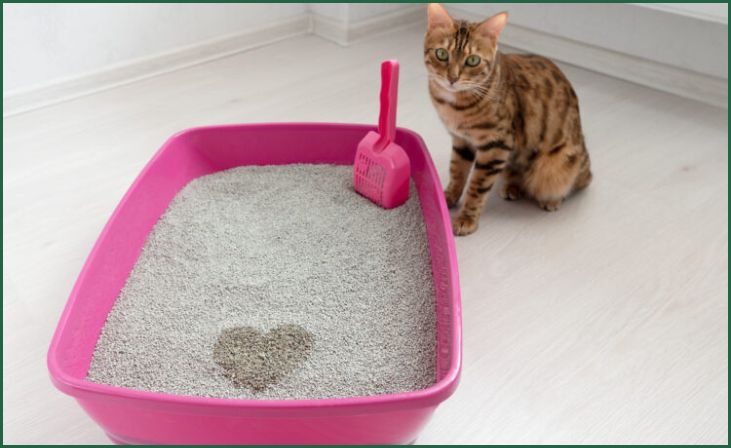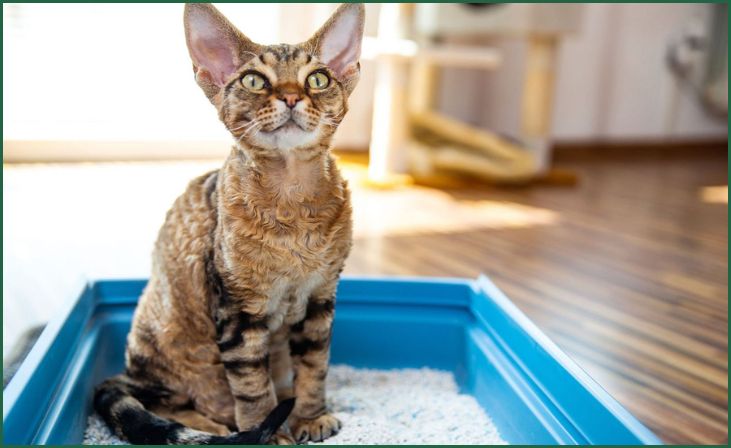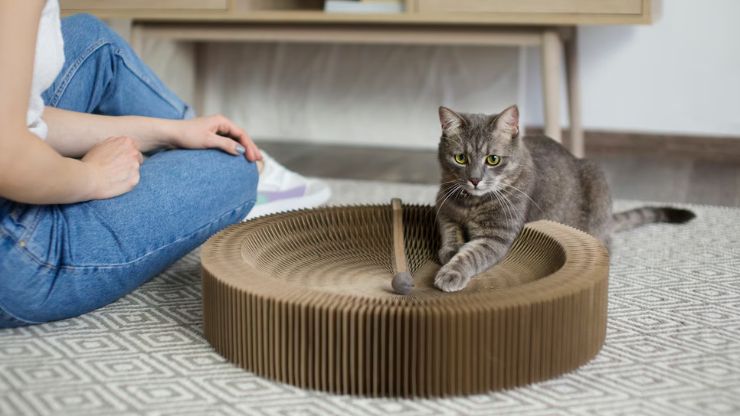How to Litter Train a Kitten – Litter training is a crucial step in acclimating a kitten to indoor living and fostering a healthy relationship between the pet and its owner. Beyond the obvious benefits of maintaining a clean living space, teaching a kitten to use a litter box promotes their well-being and ensures a harmonious coexistence with human companions.
This process requires a nuanced understanding of the kitten’s age, health, and behavior, coupled with strategic choices in selecting the appropriate litter box and introducing it gradually.
Through this guide, we aim to provide a comprehensive overview, offering practical insights into establishing a consistent routine, troubleshooting challenges, and ultimately celebrating the successful integration of litter training into the kitten’s daily life.
Patience and positive reinforcement form the foundation of this journey, fostering not only proper hygiene but also a strong and affectionate bond between the owner and their feline companion.
Table of Contents
ToggleBenefits of a litter-trained kitten
Litter training offers numerous benefits for both the kitten and its owner:
- Hygiene: Litter training ensures a cleaner living environment by containing waste in a designated area, making it easier for owners to maintain cleanliness and hygiene.
- Convenience: With a litter-trained kitten, there is no need for frequent outdoor walks like with dogs. This is especially advantageous for individuals with busy schedules or those who live in apartments.
- Health: Litter training encourages good hygiene practices, reducing the risk of infections or health issues related to exposure to waste materials.
- Indoor Living: For cats kept primarily indoors, litter training provides a comfortable and controlled way for them to satisfy their natural instincts without compromising the cleanliness of the living space.
- Bonding: The training process itself fosters a positive relationship between the owner and the kitten through positive reinforcement and shared routines.
- Behavioral Satisfaction: Cats have an instinctual desire to bury their waste. Litter training allows them to exhibit this natural behavior, contributing to their mental and emotional well-being.
- Reduced Odor: Properly maintained litter boxes help control and contain odors associated with cat waste, contributing to a more pleasant living environment.
Also, Read – Cute Maine Coon Cats and Kittens
How to Litter Train a Kitten
Choose the Right Litter Box

Select a low, easily accessible litter box for your kitten, ensuring it’s not too high for them to climb in and out. Consider uncovered options for a clear view. Place it in a quiet, private location, away from their food and sleeping areas.
Experiment with different litters, opting for a fine-grained, unscented clumping variety. Gently introduce your kitten to the box after meals and playtime. Positive reinforcement, like praise and treats, helps create positive associations.
Maintain a consistent schedule and promptly clean any accidents. Transition to a larger box as your kitten grows, ensuring a comfortable and stress-free environment.
Also, Read – Kitten Breeds Ideal for Young Children
Select the Right Cat Litter
Choose a fine-grained, unscented clumping litter for your kitten. Most kittens prefer this texture, and it facilitates easy cleaning. Experiment with different types to find what your kitten likes best. Avoid scented litters, as some cats find the fragrance unpleasant.
Clumping litter simplifies waste removal and helps keep the litter box fresh. Additionally, it provides a smoother surface for your kitten’s paws.
Consider the dust level of the litter, as some cats are sensitive to dust. Ultimately, the right cat litter is one that meets your kitten’s preferences while allowing for easy maintenance and cleanliness.
Place the Litter Box in a Quiet Location
Position the litter box in a quiet, low-traffic area to provide your kitten with a sense of privacy and security. Avoid placing it near their food and water bowls, as cats prefer separate spaces for these activities.
Choose a location that is easily accessible but away from noisy appliances or areas with high human traffic. Cats often prefer a calm environment when using the litter box, so select a spot where they won’t be disturbed.
Creating a quiet and secluded space for the litter box contributes to a positive association with the area and encourages consistent litter box use.
Introduce the Kitten to the Litter Box
Gently introduce your kitten to the litter box by placing them inside after meals, playtime, or when they wake up. Allow them to explore the box at their own pace. If they begin to scratch or dig in the litter, it’s a positive sign.
Provide positive reinforcement such as praise and treats when they use the box. Repeat this process consistently to establish the connection between the litter box and elimination needs.
Be patient and avoid forcing the kitten into the box; instead, create a positive and encouraging environment to help them feel comfortable and confident in using the litter box.
Don't just scroll, subscribe!
BuzzTrail's unique web-stories are the cure for boredom you've been waiting for.
Use Positive Reinforcement

Employ positive reinforcement when your kitten uses the litter box. Immediately after they eliminate, offer verbal praise and reward them with a small treat. Associating the litter box with positive experiences encourages repeat behavior.
Consistency is key, so reinforce good behavior each time. Avoid punishing accidents, as this may create fear and anxiety around the litter box.
Positive reinforcement strengthens the bond between the behavior and the reward, making it more likely your kitten will continue using the litter box appropriately. Patience and positive reinforcement contribute to a stress-free and successful litter training experience.
Be Consistent
Maintain a consistent routine for feeding and placing your kitten in the litter box, reinforcing good habits. Schedule regular meals and promptly introduce them to the box afterward. Consistency establishes a predictable environment, helping your kitten associate specific times with using the litter box.
If you observe them showing signs of needing to eliminate, guide them to the box. Reinforce this routine daily to solidify positive behavior.
A consistent approach reduces confusion and anxiety, creating a comfortable environment for your kitten to develop reliable litter box habits. Consistency is crucial for successful and stress-free litter training.
Clean Accidents Promptly
Clean up any accidents promptly and thoroughly to discourage repeat incidents. Use an enzymatic cleaner to eliminate odors completely, preventing your kitten from returning to the same spot. Prompt cleaning removes scent markers, reducing the likelihood of your kitten associating that area with elimination.
Cats are more likely to use the litter box when their environment is clean and odor-free. Regularly scoop the litter box to maintain cleanliness and provide a positive experience. Quick and effective cleanup promotes a hygienic and inviting environment, contributing to successful litter training for your kitten.
Monitor for Signs of Distress
Monitor your kitten for signs of distress while using the litter box. Unusual behaviors such as straining, vocalization, or visible discomfort may indicate health issues. If you observe these signs, consult your veterinarian promptly.
Regular veterinary check-ups ensure your kitten’s well-being. Additionally, watch for changes in litter box habits, as alterations may signal underlying problems.
Cats often hide signs of illness, so being attentive to their behavior is crucial. Early detection and addressing potential health issues contribute to a positive litter training experience and overall well-being for your kitten.
Avoid Punishment
Avoid punishing your kitten for litter box accidents, as it can create anxiety and hinder the training process. Cats may not understand the punishment and could associate the litter box with negative experiences.
Instead, focus on positive reinforcement by praising and rewarding them when they use the box correctly. Patience and a positive approach are essential for successful litter training. If accidents occur, clean them promptly and remain consistent in encouraging proper litter box behavior.
A positive and supportive environment fosters a healthy association with the litter box and encourages your kitten to develop good habits over time.
Transition to Adult Litter Box

As your kitten grows, transition to an adult-sized litter box gradually. Choose a box that accommodates their size comfortably. Place the new box next to the old one initially, allowing your kitten to get accustomed to the change.
Over a few days, move the new box to the desired location, and gradually phase out the old one. Some kittens may need time to adapt to the larger box, so be patient.
Ensure the new box maintains the preferred characteristics, such as being low-sided and easily accessible. A smooth transition promotes continued positive litter box habits as your kitten matures.
Conclusion
In conclusion, litter training is a fundamental aspect of responsible kitten care, offering benefits that extend beyond mere convenience. It establishes a clean and healthy environment, nurtures a strong bond between owner and kitten, and ensures the cat’s well-being.
By fostering positive habits and understanding the feline’s instincts, owners create a harmonious living space where their litter-trained companion can thrive. With patience, consistency, and care, the successful integration of litter training becomes a rewarding journey, enhancing the joy of pet ownership.
FAQs
How many litter boxes do I need for a kitten?
How many litter boxes do I need for a kitten?
Ideally, have one litter box per cat, plus one extra. For a single kitten, one box is usually sufficient, but as they grow, having multiple boxes can prevent territorial issues and ensure accessibility.
What type of litter is best for a kitten?
What type of litter is best for a kitten?
Choose a clumping, unscented litter as kittens often prefer this texture. Avoid using clay clumping litters for very young kittens, as they might ingest it.
How often should I clean the litter box?
How often should I clean the litter box?
Scoop the litter box at least once a day to remove waste, and change the litter regularly. Maintaining cleanliness encourages the kitten to use the box consistently.

